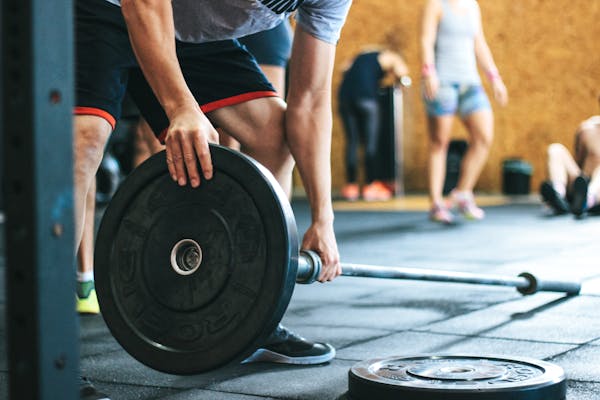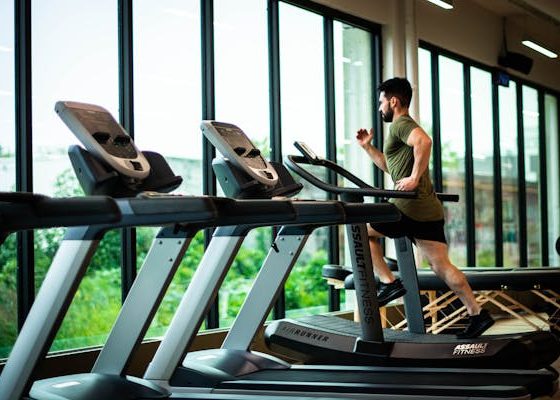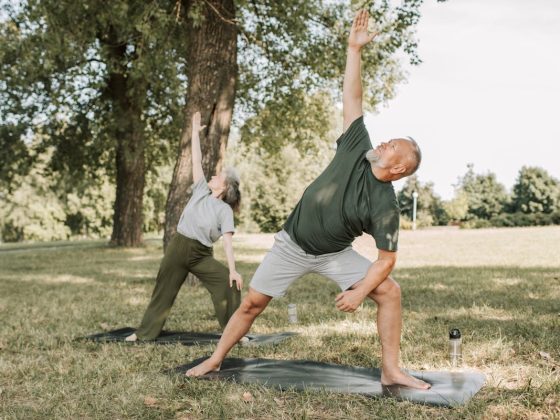Physical strength is a fundamental component of overall health, athletic performance, and quality of life. Whether you’re an athlete aiming to enhance your performance or someone who simply wants to become stronger for everyday activities, building physical strength requires a strategic combination of exercise, nutrition, and recovery. In this article, we will provide practical and science-backed tips to increase physical strength, covering everything from workout routines and dietary habits to mental strategies and recovery techniques. By implementing these tips, you can make steady progress toward your strength goals, improve your physical capabilities, and reduce the risk of injury.

Understanding Physical Strength
Before diving into specific tips to increase physical strength, it’s essential to understand what strength entails. Physical strength refers to the ability of a muscle or group of muscles to generate force. It depends on several factors, including muscle mass, neuromuscular coordination, and tendon strength.
Strength training is the most effective way to improve your ability to produce force. This can take many forms, from weightlifting and bodyweight exercises to resistance training and functional movement exercises. However, building strength is not only about lifting heavier weights but also about training the body systematically and efficiently.
Types of Strength
When discussing tips to increase physical strength, it’s important to differentiate between various types of strength:
- Maximal Strength: The maximum force a muscle can exert in a single effort. This is usually measured by exercises like deadlifts, squats, and bench presses.
- Explosive Strength: The ability to generate force quickly, important in sports like sprinting, jumping, and Olympic lifting.
- Endurance Strength: The ability to maintain muscle contractions over an extended period, necessary for activities like long-distance running or swimming.
- Relative Strength: The strength you have relative to your body weight. Gymnasts and rock climbers, for example, need high levels of relative strength to control their bodies.
Depending on your goals, different training techniques can help target these various forms of strength. Now, let’s dive into practical tips to increase physical strength.
Prioritize Compound Movements
One of the most important tips to increase physical strength is to prioritize compound movements in your workout routine. Compound exercises involve multiple joints and muscle groups, allowing you to lift heavier weights and stimulate greater muscle growth.
Best Compound Exercises
- Squats: Squats are one of the most effective exercises for building lower body strength. They engage the quadriceps, hamstrings, glutes, and core muscles.
- Deadlifts: A full-body exercise that primarily targets the posterior chain (hamstrings, glutes, and lower back), deadlifts are crucial for building overall strength.
- Bench Press: The bench press is an excellent exercise for developing upper body strength, targeting the chest, shoulders, and triceps.
- Pull-Ups/Chin-Ups: These are great for building upper body strength, especially in the back and biceps.
- Overhead Press: This exercise focuses on the shoulders and triceps while also engaging the core.
These movements not only help you build muscle mass but also improve functional strength, which is essential for everyday tasks and sports performance.
Progressive Overload
If you’re serious about building strength, progressive overload is one of the most critical tips to increase physical strength. Progressive overload refers to gradually increasing the weight, intensity, or volume of your workouts over time. This forces your muscles to adapt, grow, and become stronger.
How to Implement Progressive Overload:
- Increase Weight: Add more weight to your lifts as your strength improves. Aim for small increments to avoid injury.
- Increase Reps and Sets: Gradually increase the number of repetitions or sets you perform for each exercise.
- Adjust Rest Periods: Shorten rest periods between sets to increase workout intensity, or extend rest periods when lifting heavier weights.
- Vary Training Variables: Incorporate different techniques like tempo training, drop sets, or supersets to keep your muscles challenged.
By consistently applying progressive overload, you can ensure that your muscles are constantly adapting and growing stronger.
Focus on Proper Form and Technique
No matter how much weight you lift, if your form and technique are incorrect, you won’t maximize your strength gains, and you could risk injury. Focusing on proper form is a fundamental tip to increase physical strength. Poor technique can also limit the amount of weight you can safely lift, thus hindering your progress.
Why Proper Form Matters:
- Injury Prevention: Lifting weights with poor form can put undue stress on your joints, tendons, and ligaments, leading to strains, sprains, or even more severe injuries.
- Efficiency: Proper form ensures that you’re targeting the intended muscles effectively, maximizing strength development.
- Longevity: Consistently using good form will allow you to train safely over the long term, making steady and sustainable gains.
It may be helpful to work with a personal trainer or strength coach to learn proper techniques for complex exercises like deadlifts or squats.
Prioritize Strength over Size (at First)
While muscle size and strength often go hand-in-hand, focusing on pure strength initially may yield better long-term results. Strength gains occur from both muscular hypertrophy (muscle size increase) and neural adaptations. The latter refers to your nervous system becoming more efficient at recruiting muscle fibers during a lift.
Low Rep Ranges for Strength
Lifting heavier weights for lower repetitions (typically 3-6 reps) is one of the key tips to increase physical strength. This style of training is particularly effective for stimulating neural adaptations, which can significantly boost your strength without necessarily increasing muscle size at first.
Once you’ve established a solid strength base, you can shift to higher rep ranges to focus on muscle hypertrophy if that aligns with your goals.
Incorporate Accessory Work
In addition to compound lifts, it’s crucial to include accessory exercises that target smaller muscle groups or help improve weak points. These exercises not only contribute to overall muscle balance but also help prevent injuries, making them an essential part of the tips to increase physical strength.
Effective Accessory Exercises:
- Lunges: Strengthens the quads, glutes, and hamstrings while improving stability and balance.
- Tricep Dips: Focuses on building strength in the triceps, which can translate to better pressing power.
- Bicep Curls: Though not a compound movement, strong biceps support back exercises like rows and pull-ups.
- Romanian Deadlifts: Targets the hamstrings and glutes, helping to improve your deadlift and squat strength.
Incorporating accessory work ensures that all muscle groups are being trained effectively, helping to maintain balance and prevent imbalances that can lead to injury.
Adequate Rest and Recovery
Recovery is just as important as the workout itself when it comes to building strength. Muscles need time to repair and grow stronger after being stressed during a workout. Overtraining without proper recovery can lead to fatigue, injury, and plateaus in progress.
How to Optimize Recovery:
- Sleep: Aim for 7-9 hours of quality sleep per night. Sleep is when the body repairs muscle tissue and releases growth hormones that aid in recovery.
- Rest Days: Incorporate at least one to two rest days per week to allow your muscles to recover fully. Active recovery activities like walking or yoga can be beneficial.
- Stretching and Mobility: Incorporate stretching and mobility work to improve flexibility, reduce muscle stiffness, and prevent injury.
- Hydration: Staying hydrated helps with muscle recovery and ensures that your muscles function optimally during workouts.
By giving your body the time and resources it needs to recover, you will be better positioned to continue making strength gains.
Nutrition for Strength
Nutrition plays a significant role in building physical strength. Without proper fuel, your body won’t have the energy or resources to build and repair muscle effectively. Prioritizing a balanced, nutrient-dense diet is one of the essential tips to increase physical strength.
Macronutrient Guidelines:
- Protein: Protein is essential for muscle repair and growth. Aim to consume 1.6 to 2.2 grams of protein per kilogram of body weight per day. Lean meats, fish, eggs, dairy, and plant-based options like legumes and tofu are excellent sources of protein.
- Carbohydrates: Carbs are the body’s primary energy source, and they’re especially important for strength training. Incorporate complex carbs like whole grains, fruits, and vegetables to fuel your workouts.
- Fats: Healthy fats, such as those from avocados, nuts, seeds, and olive oil, support hormone production and provide a slow-burning energy source.
Pre- and Post-Workout Nutrition:
- Pre-Workout: Eating a meal rich in carbs and moderate in protein about 1-2 hours before training can help ensure you have enough energy for your workout.
- Post-Workout: After training, consume a meal or snack that includes both protein and carbs to kickstart the recovery process and replenish glycogen stores.
By maintaining a consistent and nutrient-rich diet, you will be better equipped to sustain your strength training routine and see improvements over time.
Consistency and Patience
Strength building is a long-term process that requires dedication and patience. While short-term progress can be motivating, the most significant gains come from consistent training over months and years.
How to Stay Consistent:
- Set Realistic Goals: Break your overall strength goals into smaller, manageable milestones. Celebrate these small victories to stay motivated.
- Track Progress: Keep a workout journal to track your lifts, reps, and sets. This allows you to monitor progress and make adjustments to your training program when needed.
- Periodization: Incorporate different phases of training, alternating between strength-focused periods and other training goals like hypertrophy or endurance. This keeps your training fresh and prevents burnout.
Remember, building strength is a marathon, not a sprint. With persistence, you’ll continue to make steady progress.
Mental Focus and Visualization
Building physical strength is as much a mental challenge as it is a physical one. Staying focused during workouts and visualizing success can have a profound impact on your performance.
Mental Techniques for Strength Building:
- Visualization: Before a lift, take a few moments to visualize yourself successfully completing the movement. This mental rehearsal can improve focus and boost confidence.
- Mind-Muscle Connection: Focus on contracting the muscles you’re targeting during each exercise. This technique improves form and ensures you’re maximizing muscle activation.
Conclusion
Building strength is a multifaceted process that involves more than just lifting weights. By following these tips to increase physical strength—focusing on compound movements, applying progressive overload, maintaining proper form, fueling your body with the right nutrition, and allowing for adequate recovery—you will be well on your way to achieving your strength goals. Remember, consistency and patience are key, and with dedication, the strength you gain will benefit your health, athletic performance, and daily life.




